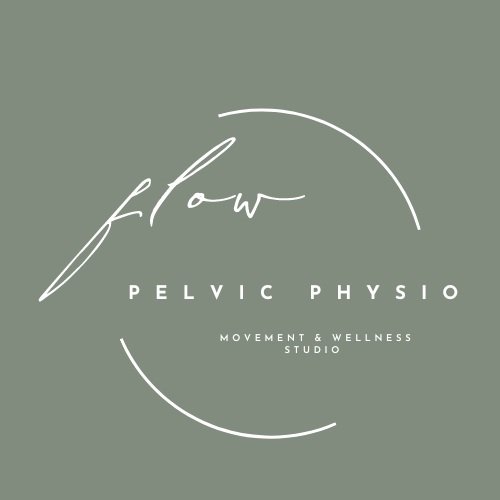Postnatal return to running - a guide for mum after baby.
During the busy postnatal period, running can be a very convenient form of exercise for new Mumma’s because it’s shoes on and out the door. No equipment, no cost, no appointment, how good!
At Flow Pelvic Physio we want to encourage our Mumma’s to be physically active however it is important that you make sure your body is ready both physically and psychologically, to facilitate a safe return to running in the postnatal period.
First things first, getting strong again! Before you start running, ideally you would have spent 6-12 weeks building strength back up after bub. This might look like a Mums N Bubs class, pilates, gym based rehab or a home exercise program. This also helps to get you to the time frame of being at least 12 weeks postnatal before returning to running.
Below are the load, impact and strength requirements for return to running. These can be used at home as a readiness for running checklist. At Flow Pelvic Physio we will also run through these with you to not only check that you can achieve them, but that you can complete them pain free with good control and the absence of any symptoms of pelvic floor dysfunction such as pain, heaviness, dragging or incontinence. We also prefer our patients to have excellent pelvic stability and lower limb control during these tests.
“The research has not yet specified exercises like HIIT and CrossFit however these principles could be applied to any form of high impact exercise as a general guide.”
LOAD & IMPACT TESTS
Jog on the spot for 1 minute
Single leg running man x10
Double leg forward bounds x10
Single leg squats x10
Single leg hop in one place x10
Single leg balance for 10 seconds
Walk 30 minutes
LOWER LIMB STRENGTH REQUIREMENTS
20 single leg bridges
20 side lying leg lifts
20 single leg sit to stands
20 single leg calf raises
Next up is of course….
THE PELVIC FLOOR MUSCLES!
These muscles are usually assessed in standing. An internal vaginal examination is the gold standard for this assessment however if for any reason you are unable to have an internal assessment or you simply don’t want to, there are always alternative assessment options. If you don’t have access to a pelvic health physio, these targets can be a great way to test yourself at home!
6-8 second maximal contraction x8-12 reps
10 quick contractions
60 second sub-maximal contraction (30-50%)
“Remember to keep all other muscles relaxed and continue normal breathing throughout.”
CORE STRENGTH REQUIREMENTS
Optimal is another important part of return to running in the postpartum period. Current research does not give any explicit guidelines for the core strength requirements for postnatal women who are returning to running however this is rapidly changing so hopefully new research isn’t too far away! At Flow Pelvic Physio we assess the abdominal wall and screen for any factors affecting the abdominal wall which may hinder a smooth return to running include:
Presence of DRAM (“abdominal separation”) that is not controlled functionally, causing abdominal doming or sinking
Core strength and ability to transfer load under increased abdominal pressure
Presence of back pain, vaginal heaviness or leakage
Some example home based exercises include:
Curl ups x10-12 reps x 2-3 rounds
Table top obliques 30 sec x 3 rounds
Side plank on toes 30 sec x 3 rounds +/- scissor lift
Finally….
ADDITIONAL CONSIDERATIONS
Psychological readiness, take the pressure off and aim to resume higher level exercise when you feel prepared and ready for it
Nutrition to fuel your body and facilitate recovery
Sleep to facilitate physical & psychological recovery
Supportive attire inc. sports bra (especially if you’re breastfeeding) & supportive footwear
Compression garments (such as abdominal and/or perineum support)
Scar healing & mobilisation (both caesarean and perineal)
“Prior to returning to running it is important to be cleared by your pelvic health physio and to wait until you’re at least 12 weeks postnatal.”
If you do experience any unwanted symptoms as you increase your exercise intensity and return to running, we recommend ceasing impact exercise and getting checked by a pelvic health physio. Symptoms of pelvic floor dysfunction can include:
Bladder leakage
Bowel leakage
Urinary urgency
Vaginal heaviness, bulging or dragging
Low back pain
Hip or pelvic pain
At Flow Pelvic Physio we complete a detailed return to running assessment with our patients and provide you with a specific home exercise program to address any strength deficits identified during your assessment and provide a graded return to running program. You can book as assessment here.
“Remember that no post natal journey is the same so take the pressure off Mumma! Do what feels right for you, when you feel ready.”
Reference: Goom, T., Donnelly, G. & Brockwell, E (2019). Return to running postnatal guidelines for medical, health and fitness professionals managing this population. Absolute Physio.
Disclaimer: Please note this is not individualised advice and are general guidelines only. For an individualised plan please see your pelvic health physiotherapist.


